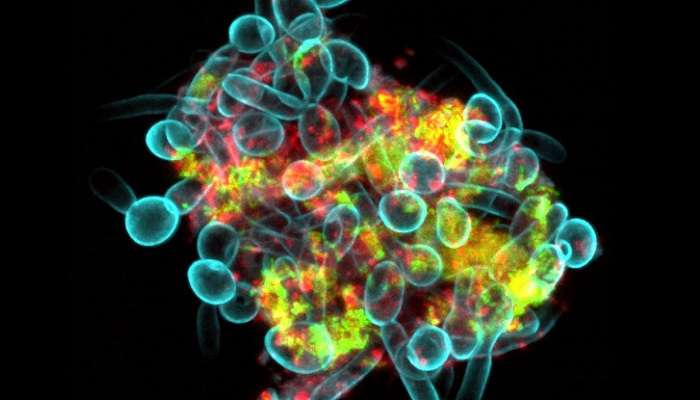
According to a somewhat accidental discovery, bacteria and fungi can work together to destroy your teeth.
Dental researcher Zhi Ren noticed two distinct types of microbes when investigating the cause of aggressive tooth decay in toddlers.
The researchers investigated how these bacterial-fungal clusters in human saliva might work together in the mouth to cause tooth-rotting disease.
The research uncovered several ’emerging functions’ of the clusters, which make the species act like an entire new organism — including the ability to move and spread across our teeth.
Caught performing activities they would not have been able to perform on their own.
The bacteria, Streptococcus mutans, which are normally held in check by the urging of saliva, were no longer bound to it. They could now ‘leap’ or spread by ‘growing’, as they hopped on the extending yeast branches.
According to microbiologist Knut Drescher of the University of Basel in Switzerland, this discovery of a ‘bad guy’ superorganism is groundbreaking and unexpected.
“No one would have dreamed this would happen.”
It’s not that bacteria and fungi haven’t been found working together before. Multicellular biofilms cause many human infections. It’s rather that we still lack knowledge about how these communities develop and function.
In the current study, the authors found bacterial clusters can attach to the body, branches, and exterior sugars of fungal yeasts.
This cell network is better able to attach to teeth as a group than the cells on their own. The ‘super organism’ is also more tolerant to antimicrobials and tooth brushing, in addition to being more efficient.
The biggest mystery is how the superorganism moves.
S. mutans does not have limbs to swim around, and C. albicans does not have legs to walk in, so neither of them can move. However, C. albicans legs can be extended, so bacteria hitchhikers can be transported on them.
Bacteria can ‘leap’ forward by merging with other biofilms when they are attached to these probing fungal filaments.
Researchers tested superorganisms on tooth-like surfaces and found that the bacteria moved at more than 40 microns an hour, similar to the speed of wound-healing molecules in the human body.
The authors caught bacteria jumping 100 microns away, a distance more than 200 times their usual body length, within hours of the pathogens binding.
The team believes no one else has reported this type of group mobility at this scale.
Biofilms linked to dynamic fungal–bacterial interactions cause more severe tooth damage than static biofilms, the authors say.
Researchers think that preventing bacteria and fungi from binding might help prevent cavities.
Beyond dental work, however, the discovery matters too.
New research may help explain how similar superorganisms cause infectious diseases or damage the environment with such rapidity.
The authors note intriguing possibilities open to collective multicellular migratory modes.
“Stochastic mobility mechanisms or navigation strategies might function as interkingdom colonizers to boost range expansion nearby or to a desired location, assisting them in their navigation.”
The experiment was reported in PNAS.







